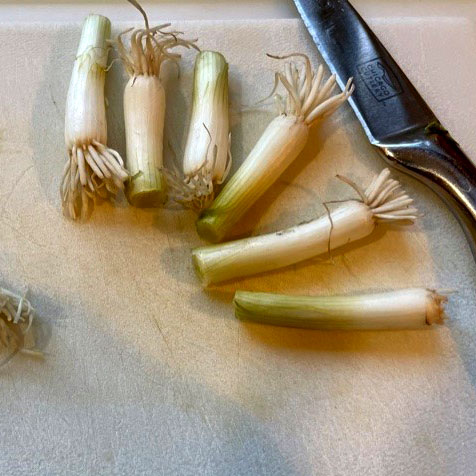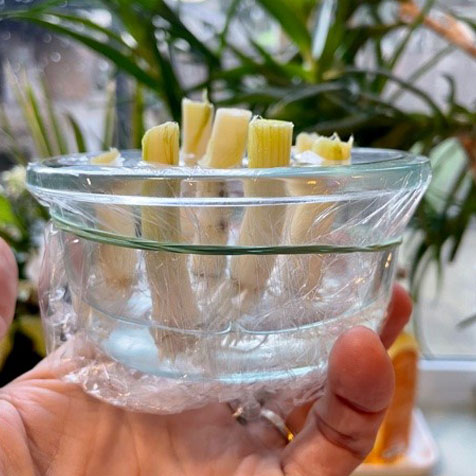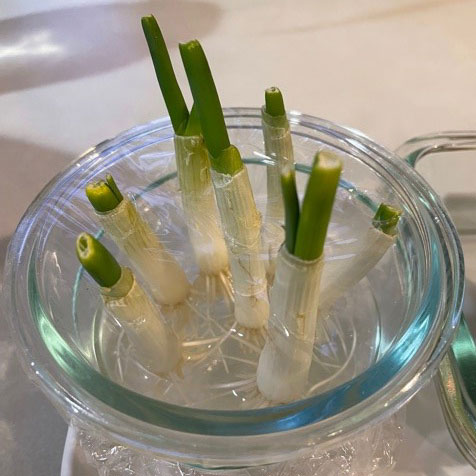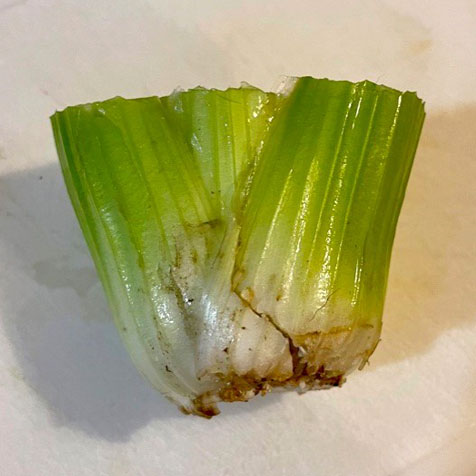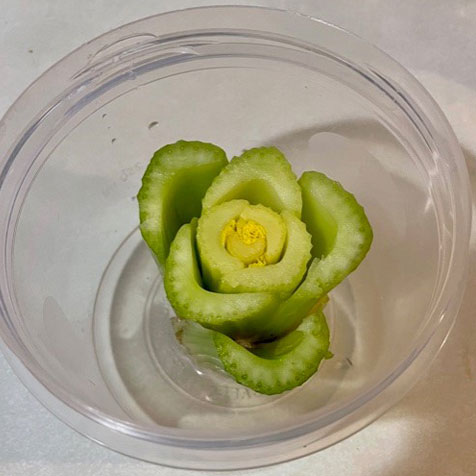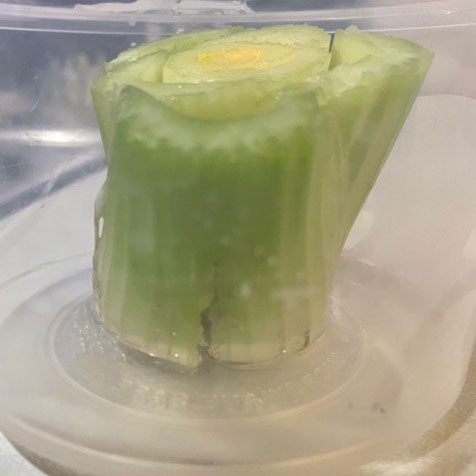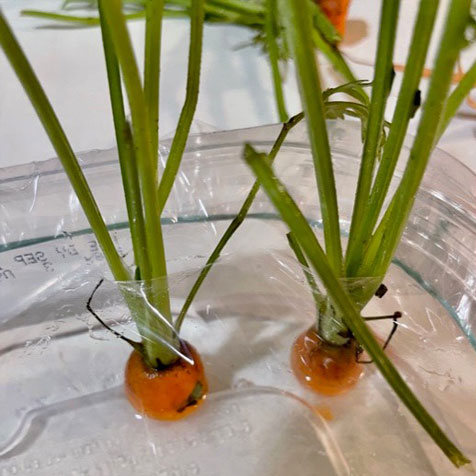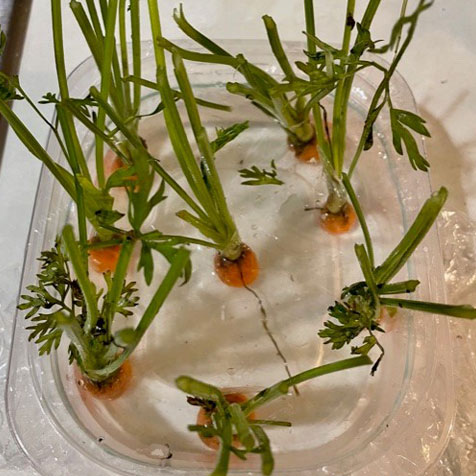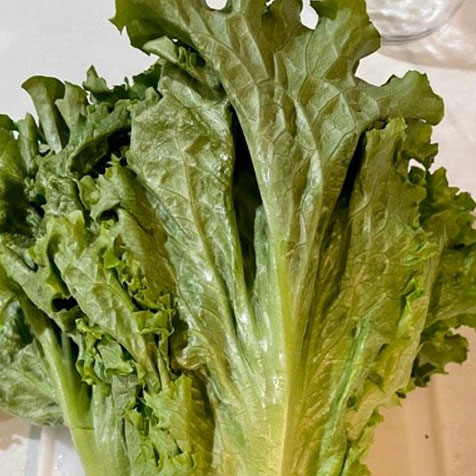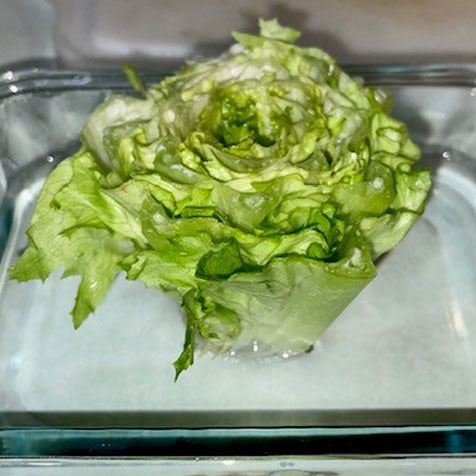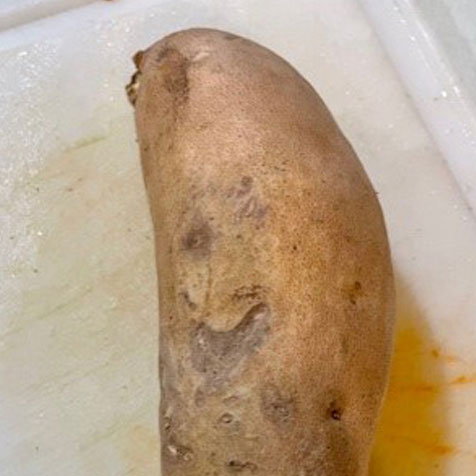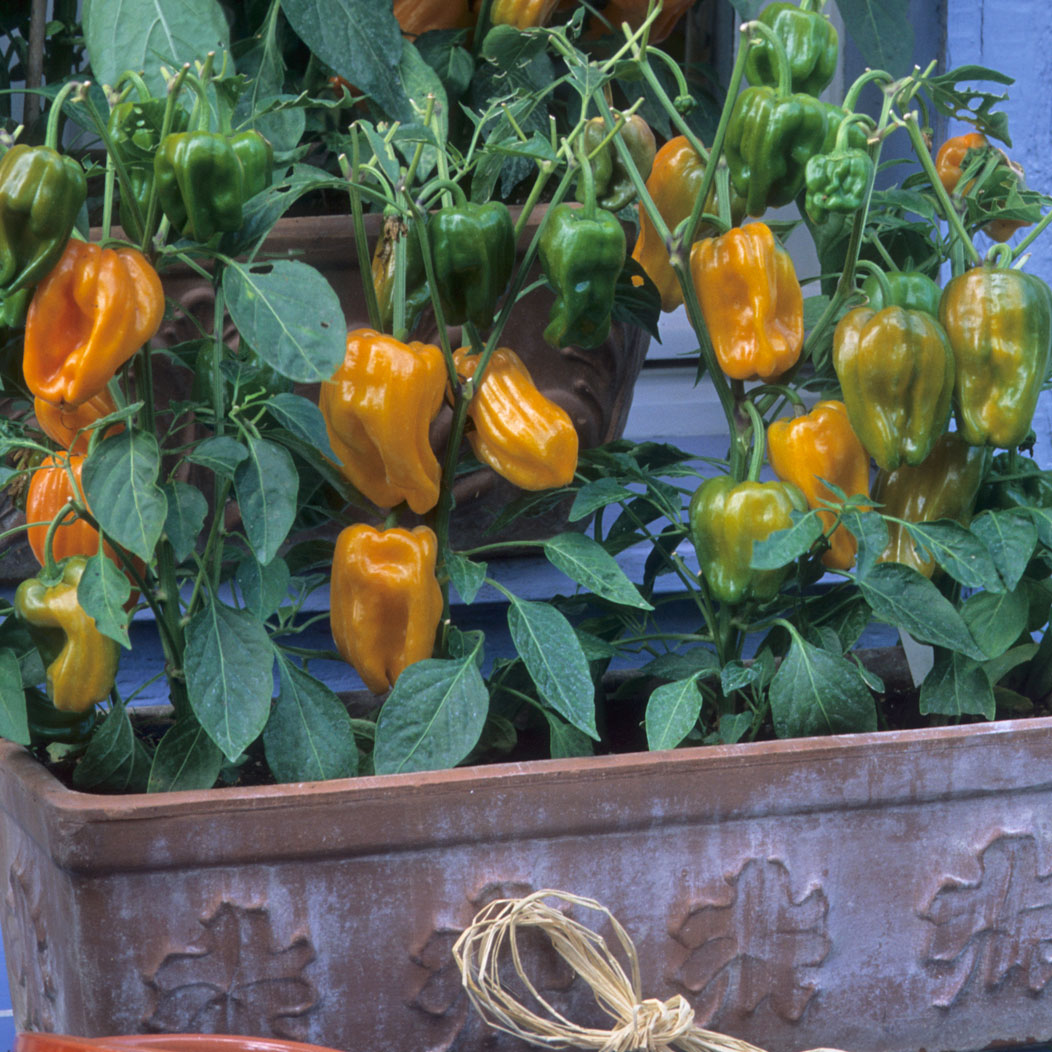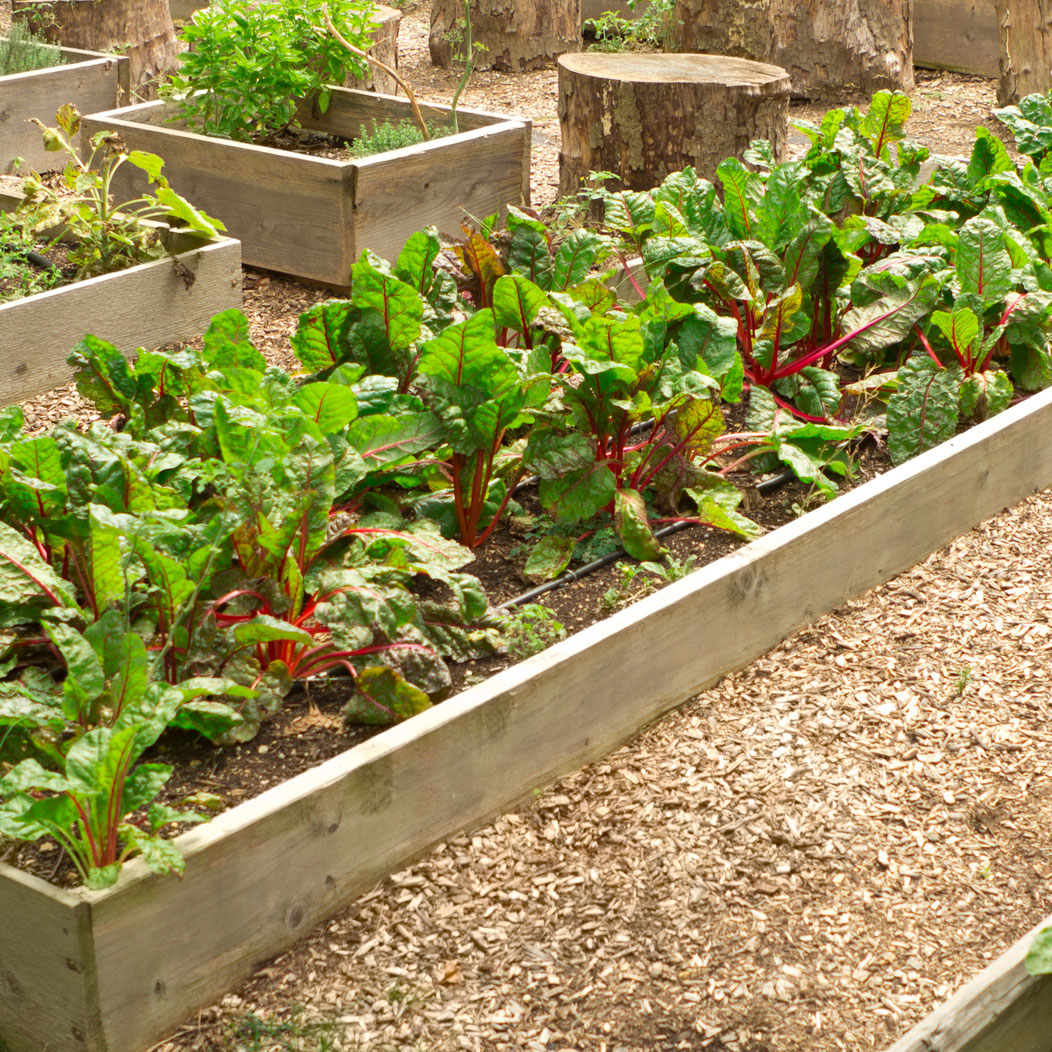A great (and tasty!) way to reduce your carbon footprint is to buy local fruits and vegetables. Sometimes that can be a challenge, especially when the farmer’s market is closed for the season. Wouldn’t it be cool to have your own garden to grow some food? If you have space in a yard for a garden, some containers on a patio, or even jars in a window, there are ways to grow food for your household. Let’s explore some options:
Gardening in a small space
Some foods can be grown from their scraps. It’s true! Green onions, lettuce, and celery are just a few foods you can grow in a jar of water to be used multiple times. This can help save money and it is interesting to watch the parts develop roots!
Green onions, garlic, leeks, and shallots
These grow quickly! Place the root in a shallow container of water. Green onions are especially fun to watch. The green of the onion continues to grow taller and can be cut over and over. Remember to change the water on a weekly basis. Some of the larger plants, like shallots, can be rooted the same way and transferred to a pot of soil outside. This will expand the harvest each year
Celery
This is the easiest plant to grow over and over again. The bottom portion of the celery, where all the stalks meet, can be placed in a shallow jar or plate with water. Celery likes sunny, warm locations. After a week or more, stalks will start growing. You can wait for the size of stalk you want and harvest it in the house. You can also plant it in a pot or garden to grow more.
Carrots, turnips, beets, radishes, and other root veggies
Instead of keeping the bottom of the plant, like in celery and green onions, keep the tops and place them in shallow water. New green tops will start to grow first. The greens can be harvested and used as they grow. The root will continue to grow and eventually, it can be harvested or planted in a pot or garden to grow even larger.
Lettuce, cabbage, and bok choy
Keep the bottom of the lettuce, cabbage, or bok choy and place it in water. The roots will start to grow and after enough time, the leaves will too. Be sure to change the water weekly. Lettuce is a unique plant in that its leaves can be cut off and regrown over and over again. It’s an endless salad bar!
Sweet potato
Take a sweet potato and poke some wood toothpicks into it. This will help brace the sweet potato in the jar, over water. In a few days, roots should start developing. Change the water once a week and eventually there will be sprouts growing from the top of the sweet potato. When the sprouts grow at least four inches tall, cut the sprout and place them in shallow water. The sprouts will grow roots and those can be planted in a garden, raised bed, or pot.
Herbs
Not only will the kitchen smell fantastic, but this will save some money on the grocery bill. If you’ve gotten herbs from the store or a neighbor has given you some cuttings, put the stem in about 4 inches of water. Make sure the leaves are above the water! Change the water once a week. Roots will grow pretty quickly. The plants can then be put into a pot or continue to grow in the water as the leaves are harvested for use. Try rosemary, basil, parsley, cilantro, or mint!
Container gardening
Container gardens are fantastic for gardening. They help when space is limited, they can go with you if you move, and they use fewer resources. You can even move the containers around to make sure they are getting plenty of sunshine. Containers must have drainage holes so extra water does not stay around the roots. Also, think about the size of the container and what you want to plant in it. The container should be large enough to support the root system. Want giant tomatoes? You’ll need a big container. If you want a few dozen carrots, then a deep container makes the most sense.
Tomatoes
A homegrown tomato tastes so much better than one bought at the grocery store. Thankfully, tomatoes are relatively easy to grow! They can be grown in pots on a patio or porch. Want to try growing a tomato plant from a tomato you’ve already purchased? Fill a pot about halfway with potting soil. Slice the tomato into four slices. The slices should be one inch thick. Place the four slices into the pot onto the soil. Next, pile more potting soil on top of the slices. Compact the soil but make sure the tomatoes will have room to grow. Water thoroughly and regularly. After a few weeks, the plants will start sprouting. Eventually, you will want to remove the strongest seedlings and replant them in their own pots so they have more room to produce tomatoes. Keep the soil moist and give the tomatoes at least six hours of sunlight each day.
Peppers
These delicious treats grow very well in containers – and with your tomatoes and the cilantro from the herb jar, you can make a nice salsa. Buying a pepper start is the easiest way to grow peppers but the seeds can be harvested, germinated, and planted for more patient gardeners. Peppers love heat so they need a sunny place to grow in.
Swiss chard or kale
Both leafy veggies grow well indoors in containers. The Swiss chard looks like a colorful house plant. Both plants like sunshine but they will also thrive in partial shade. If planting from seeds, plant rows of seeds one week apart. This will give you a long harvest and not too much all at once.
Yard, community, or raised bed gardens
It would be wonderful to have enough space for a larger garden but that means also having the time to care for the soil, pull the weeds, water the vegetation, and harvest the crop. Not everyone has the time and not everyone has the room. In Clark County, there are a variety of public and private community gardens that allow people to grow their own food in a shared space. Some schools and churches are also using their property to help community members access healthy foods. The latest trend has homeowners tearing out their green lawns for native plant gardens and raised bed vegetable gardens. Learning when to plant specific vegetables gives families a variety of food throughout the growing season.

If your household receives SNAP, the EBT card can be used to purchase seeds and starts for a garden. According to the US Department of Agriculture, for every $1 spent on seeds, home gardeners can grow an average of $25 worth of produce!

